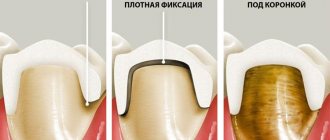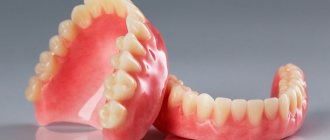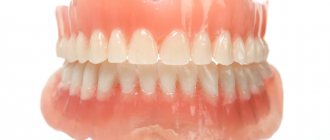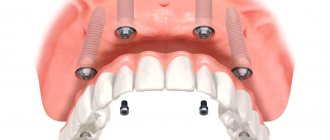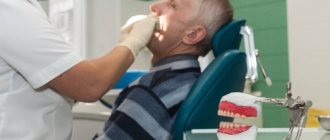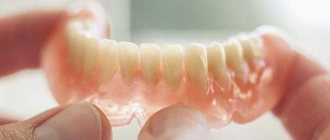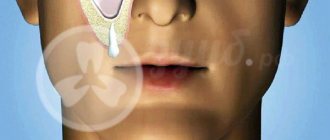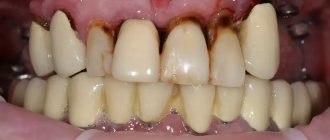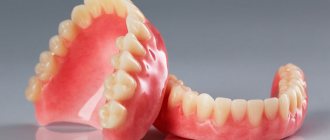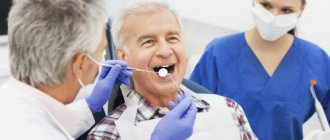Dental orthopedics combines many techniques for restoring units. Thanks to modern methods, it is possible to restore a tooth’s appearance, correct its shape and change the color of the enamel. Dental orthopedics is not only about restoring aesthetic parameters. This is essential for overall oral health. The fact is that the absence of even one unit can lead to unpleasant consequences: atrophy of the jaw tissue, displacement of teeth, the formation of gaps between units, disruption of chewing function, and so on. We will look at the benefits and what they are in more detail below.
Benefits of dental orthopedics
This direction in dentistry has several significant advantages:
- In a short period of time, aesthetic values can be restored.
- It has a reasonable price, especially when it comes to dental products that can be removed independently.
- Easy to carry out hygienic manipulations.
- You can choose different designs and select suitable fastenings.
- Any number of units can be restored, even with complete edentia.
- Dental orthopedics reduces the risk of developing bone tissue deficiency if the product involves a full load on the jaw.
- Minimum contraindications.
- Long service life. In most cases, artificial products will last more than 5 years.
- Chewing function is restored.
- The serious psychological consequences that arise from missing units can easily be avoided.
A dentist will help you decide on the type of product. The specialist will assess the condition of the oral cavity and advise (taking into account financial and physical characteristics) which design is right for you.
What types of dental orthopedics are there?
First of all, dental orthopedics is divided into two main areas:
- Fixed. These elements are installed in the dental office. You won't be able to remove them at home. They are fixed in various ways for a long time. Such products are removed only when absolutely necessary, also in the dental office. Experts recommend this technique in the absence of one or more units. When using these elements, you don't have to worry about artificial units falling out at the wrong time. Fixed orthopedics, as a rule, creates a more natural aesthetics than removable structures.
- Removable. From the name you can easily understand the essence of these products. In this case, we are talking about false jaws, that is, at any time a person can remove this prosthesis from the oral cavity and easily return it to its place. Most often used by older people with complete edentia.
If you want to install permanent products, then the dental clinic will offer you the following options:
- Ceramic filling or inlay. It is made from an impression in the laboratory. Used for chipped or significant tooth damage due to caries activity. This design is much better than a conventional filling and will last at least 3 years.
- Dental Crowns. They are made of ceramics, cermets or plastics. Used to restore one or more teeth.
- Dental bridge. It consists of several crowns combined into a single element. Replaces from 2 to several units, looks like a bridge supported by natural teeth.
Removable dental orthopedics, based on the material and fastening method used to create a fully removable or partially removable dental structure, is divided into the following types:
- Acrylic. Dental orthopedics using acrylic dentures is very popular. First of all, this is the cheapest option for restoring teeth. The dental element consists of a curved arch, which has a simulated part of the gum and artificial units. A significant disadvantage is the frequent occurrence of an allergic reaction to the material used.
- Nylon. This material is several points superior to acrylic, so the price is also slightly higher. More comfortable to wear, nylon is less likely to cause an allergic reaction, and is comfortable for daily wear.
- Bugelny. Metal-ceramic crowns are firmly held on a metal arch, which distinguishes it with very strong fixation. Bone tissue atrophy is excluded, since the clasp prosthesis evenly distributes the load. The best choice when restoring several missing teeth at once.
There is also a technique for restoring dentition, which is popular with most patients. Adhesive dental orthopedics is a relatively new technology in dental practice. Its peculiarity is the absence of turning of support units.
Video about types of orthopedic structures
Prosthetics in the absence of one tooth
Even after the loss of one tooth, changes and disturbances occur in the oral cavity. Therefore, experts recommend that treatment be carried out as quickly as possible. Depending on the clinical situation, prosthetics can be performed using several methods:
- Implantation is the best and highest quality method, which consists of installing 1 implant and a crown on it. As a result, a person will receive excellent functionality, aesthetics and comfort, will forever forget about the absence of a tooth, and no one around him will notice the replacement of a natural tooth with an artificial one;
- Installing a bridge will restore the defect and provide beautiful aesthetics. The treatment consists of making a small prosthesis that will be fixed to two adjacent teeth. The disadvantage of this method is the need to grind two teeth and install crowns on them;
- Making a butterfly prosthesis - a small removable product that consists of a plastic base in the form of butterfly wings and an artificial tooth. The prosthesis will restore aesthetics and function, is simple and inexpensive. The downside is the presence of a removable structure in the mouth, which must be removed periodically.
What problems can be solved with dental orthopedics?
With the help of dental orthopedics, the following problems can be solved:
- Replace missing units with a prosthesis.
- Restore a severely damaged tooth
- Restore chewing function in complete absence of teeth.
- Prevent jaw tissue atrophy.
Dental orthopedics is designed to restore lost or damaged units. If only 1-3 teeth are missing, experts recommend installing non-removable dental products. If more than 3 teeth are missing, a clasp denture can be installed. Acrylic or nylon products are most often installed in the absence of a large number of teeth; they will cost much less, but in terms of comfort and aesthetic indicators they will be inferior to more expensive analogues.
With complete edentia, there are two scenarios for the development of events.
- The most common option is to make a completely removable structure from acrylic or nylon. It's fast and inexpensive, but sometimes it causes discomfort, which, however, can be fixed.
- But, if you have a budget, then it is better to install ceramic crowns supported by implants. This option will look much more aesthetically pleasing, and most importantly, it is more reliable and does not cause inconvenience.
If there is a badly damaged tooth, it can be restored by installing a ceramic filling or inlay, which will last much longer than a composite filling.
If dental orthopedics turns you off due to the need to sharpen adjacent units, there is a way out! In this case, give preference to the adhesive method of orthopedics. This technique is more gentle and eliminates the negative impact on supporting teeth.
How does the process of dental orthopedics work?
Regardless of the type of product, any dental element must be manufactured individually, taking into account anatomical features. Dentures are made in a laboratory.
- The patient must come for the first consultation, during which the doctor will help determine the choice of type of prosthetics, and may also prescribe additional tests.
- On the same day, an x-ray is taken to assess the condition of the oral cavity and bone tissue.
- Next, the preparatory process usually begins, which includes the necessary procedures to eliminate diseases of the teeth and gums.
- Then an impression of the teeth is taken, from which the technician makes a plaster mold, on the basis of which the entire structure is cast.
- Once the prosthesis is ready, it needs to be tried on, the dentist will look at how well the structure fits, and the patient will point out the shortcomings that need to be eliminated in the laboratory.
- The final stage will be the final installation of the orthopedic structure in its place. If this is a removable denture, then the dentist will help with installation the first time, but in the future the patient will no longer need additional help and will independently cope with its installation or removal.
Stages of prosthetics
Treatment consists of the following stages:
- Initial consultation with an orthopedist and examination of the oral cavity;
- Examination of the condition of the patient’s teeth, gums, and jaw bones (carried out using radiography, OPTG, CT);
- Analysis of examination results and development of a treatment plan;
- Selecting an orthopedic design taking into account the patient’s wishes;
- Preparation of the oral cavity, elimination of local contraindications - includes treatment of all dental pathologies and professional hygiene;
- Taking impressions of the jaws and transferring them to the dental laboratory;
- Manufacturing of the selected design;
- Installation of the finished product in the oral cavity;
- Advice for patient use and care.
Contraindications and disadvantages
Like any other medical service, dental orthopedics in general has some contraindications. However, most of them are temporary. For example, any disease of the body in the acute stage. Of course, after recovery a person can begin prosthetics.
Fixed dentures have many advantages, but there are also disadvantages:
- They have a high cost compared to the removable option.
- It is necessary to grind the supporting units. Their appearance after the procedure leaves much to be desired.
- Not suitable for all patients. There are some contraindications.
Removable:
- Visible in the oral cavity.
- They get in the way when worn and sometimes rub the gums.
- There is a risk of jaw tissue atrophy.
- Moral discomfort, the patient constantly worries that the false jaw may fall out.
- Insufficiently stable fixation.
The following indirect factors also include contraindications:
- Pregnancy and lactation period.
- Prohibition of any type of anesthesia.
- Oncological diseases.
- Nervous system disorders.
- Minor age.
- Various blood diseases.
- Human immunodeficiency virus or complex diabetes mellitus.
Please note that indirect contraindications are relevant only for fixed structures. False teeth, which can be easily removed from the oral cavity, have no indirect contraindications for manufacture and installation.
Orthopedic dentistry
Prosthetics of lower teeth
Prosthetics of the lower teeth has features related to the fact that the lower jaw is mobile, unlike the upper.
We use the lower jaw not only for chewing, but also for speech and swallowing. Incorrect prosthetics can affect pronunciation and appearance. A complete removable denture on the lower jaw is additionally secured with glue. When installing partially removable dentures, which rest on both the gums and the remaining teeth, there are no problems.
It is also possible to prosthetize the lower teeth with fixed prostheses made of cermets, non-metallic cermets, zirconium dioxide, bridges and veneers.
Dental prosthetics for pensioners
Almost every elderly person needs high-quality dental prosthetics. Many private clinics are accommodating to pensioners and very often discounts on prosthetic procedures reach 15-20%. The possibility of prosthetics should not be ignored. Having all your teeth will not only give you the opportunity to smile and chew any food, but will also solve problems with gums that have suffered increased stress.
Dental prosthetics for periodontal diseases
Periodontal disease often causes tooth loss, and it all starts with just a little bleeding from the gums. Periodontitis is caused by heredity and malocclusion. Before prosthetics, it is necessary to cure periodontal disease, and then the dentist begins to strengthen loose teeth.
Prosthetics for patients with periodontitis is a complex procedure. First, the gum tissue is restored.
Dental prosthetics for diabetes
Dental prosthetics for diabetes are required quite often, since the teeth also suffer from this disease. A patient with diabetes needs to monitor the condition of their gums. Such people need hygienic teeth cleaning once every three months.
People with diabetes today undergo dental implantation, but, taking into account their medical history, not all clinics undertake this. If diabetes is in an active uncontrolled phase, then this may become an absolute contraindication. A more gentle way is to install bridges with grinding of adjacent teeth. In recent years, bridges have begun to be installed without turning, but this method is more expensive.
Dental prosthetics for children
Prosthetics of baby teeth in children - why is it necessary? Indeed, the time will come when permanent teeth will replace milk teeth. Prosthetics of baby teeth are necessary if for some reason, usually trauma, they have been lost. If this happened before the natural change of teeth from 6 to 14 years, then the bite begins to deform, the teeth shift, and diction is impaired.
Prostheses for children are made of plastic. Their service life is about a year, as the jaw grows. An orthodontist deals with the problems of children's prosthetics.
Children can also have metal crowns installed. Indications for the use of metal crowns:
- Restoration of primary molars after treatment of pulpitis
- Restoration of teeth with congenital defects
- Dental restoration after injury
- Complications during dental prosthetics
Dental prosthetics under general anesthesia
Dental prosthetics under general anesthesia is necessary if you still have a panic fear of the dentist. But there are other cases.
There are special categories of patients who require general anesthesia even for dental treatment. Who are they?
- Patients with cardiovascular diseases
- Patients who are allergic to all (and this happens!) local anesthetics
- Patients with severe immune problems
Before dental treatment, patients must undergo examination by a cardiologist, allergist, immunologist, and endocrinologist.
General anesthesia makes the dentist's work easier as it reduces saliva production. Which also makes it more preferable in complex medical cases.
